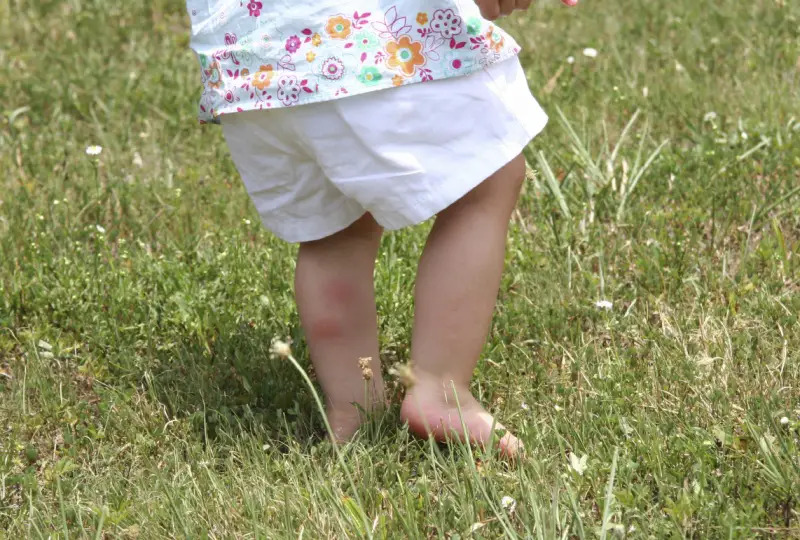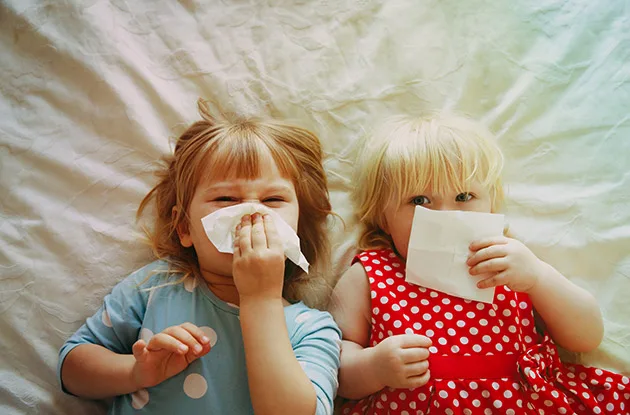The warmer months bring more outdoor activities, and your family may often end up with bug bites and stings. Premier Care’s Adhi Sharma, M.D., a board-certified medical toxicologist, shares tips to prevent bug bites and bee stings, how to remove ticks and bee stingers, the signs of Lyme disease and bee allergies, and how to select the right bug repellant.
 What are the best ways to prevent my child from getting bitten or stung?
What are the best ways to prevent my child from getting bitten or stung?
The best prevention is to keep them indoors, but that’s not a suitable solution. There are three steps you can take. The first step is protective clothing—loose fitting, light garments that are lighter in color seem to prevent insects from stinging and biting. Typically this means all of the child’s skin would have to be covered—no unexposed skin other than their face and hands and maybe their neck. In addition to that, or for whatever reason if the child isn’t comfortable with that, then you have to go to steps two and three. Step two would be some kind of insect repellant, and there are plenty of over-the-counter insect repellants. Step three would be some king of netting or meshing in areas where kids might be. If you have your windows open to make sure you have screens in. Some people have outdoor-screened patio type things so the kids can be out there, but that’s hard and somewhat restrictive.
When buying over-the-counter insect repellent, is it okay to purchase one containing DEET for use on my child?
The American Academy of Pediatrics has a position statement on DEET that suggests that DEET in concentrations of 10 percent to 30 percent is safe for children. It should not be used on children younger than 2 months of age, and it should not be used in concentrations more than 30 percent. The percentage of active ingredient, whatever the active ingredient is—there are four different EPA approved ingredients for insect repellant—affects the duration of activity. So if I’m going to be outside for eight hours, I might want a higher percentage of active ingredient as opposed to if I’m outside for a couple of hours. So what I would say is match the repellent with the type of use. So if you’re sending your kids to camp all day, you might need a higher concentration than if you were just using it in your backyard for a barbecue for a couple of hours.
What steps should I take after my child’s been stung or bitten?
There are two types of insects: Those that bite and those that sting. Mosquitoes and ticks bite, bees and wasps sting. With an inset that bites, like a mosquito, it bites and it leaves. If it’s a tick, it bites and it usually will attach itself to your child. That means that you have to inspect your child if you suspect they might be in an area where there are ticks—typically woody, bushy areas. If there are any ticks that are latched on, they should be removed.
It’s harder to remove ticks than you would think. Their head gets buried into the skin. You have to grab the tick by the head with a pair of tweezers and pull it out. And if parents aren’t comfortable doing it, it should be done by a professional—a health care provider. Some people burn ticks with a cigarette or other things—don’t do that. Ticks that do carry Lyme disease carry it in their stomach. When you do burn them like that, the tick actually vomits and that results in more of the disease element into the person.
Generally speaking, Lyme disease takes more than two days to manifest—there are no symptoms immediately after the tick bites. So it’s best to know if you’re in an area that has a Lyme disease endemic, and you can go to the CDC and check a map to see if you’re in an area. In the Northeast, it’s pretty endemic and it keeps growing further every year so that’s why it’s always good to check the map. If you’re concerned that your child was exposed to a deer tick and maybe Lyme disease, you can take him to his pediatrician or an urgent care center where a doctor can prescribe a single dose of antibiotics for prophylaxis. Once you have Lyme disease—the most common symptoms include a bull’s-eye type rash along with fever, joint pains, headache, muscle aches—you have to be treated for a full course, typically 21 days.
As far as insect stings, with bees and wasps, stingers, as well as the venom sack, are typically attached to the child. It has to be removed because as long as it’s attached, it’s going to release venom. The best way to remove it is with a credit card. You take the edge of any credit card, slide it across the skin in a sweeping motion, and it will catch the stinger and pull it out.
What are the signs that my child may be allergic to bees?
Most people do have an allergic reaction to bees—its venom. It’s not really an allergic reaction, it’s more of a localized reaction. Most commonly a bee sting will result in a single hive, so you’ll have a small bump on the skin. If that hive is very large, greater than 2 inches, that’s a good sign that the child is actually allergic to the venom. If there are multiple bumps, multiple hives, then that’s also a sign that the child is allergic. The most severe signs are the child starts wheezing or has trouble breathing or develops swelling of the lips or tongue and a closing of the throat. They should go to the emergency room right away.
Adhi Sharma, M.D., a board-certified medical toxicologist, is a physician at Premier Care, a walk-in urgent care center, with locations in Bellmore, Carle Place, Commack, Great Neck, Levittown, Lindenhurst, Lynbrook, Maspeth, Park Slope, and Syosset.





















